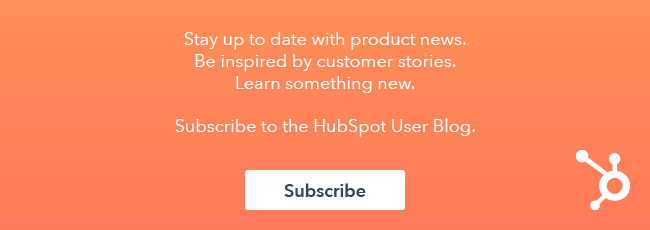If you're like most B2B businesses (and even some B2C's), chances are you have a "Contact Us" page that serves as your primary way of gathering leads. Your hope is that prospects will come to your site, be totally blown away by everything you do and offer, and drop you an "Inquiry."

In this inquiry, you expect them to tell you whether or not they're a decision maker and then proceed to tell you which one of your amazing services they'd like to contract. As a nice cherry on top, you even give them the ability to write you a little note about something, anything, with an open text field.
Chances are, your form looks a little like this:

Wouldn't it be great if our prospects were so generous with their information and forthcoming in defining for us how we could help? Unfortunately for most companies with contact forms like this, they're not. There are several problems with a form like this:
1. Your prospects have no desire to let you know that they're in a position to spend money with you.
2. The prospects that know exactly what they want represent an extremely small percentage of the people coming to your site.
3. Even through a freehand answer, your prospects will never be able to define how you can help better than you can. If they had the answer, they wouldn't be on your site.
Structuring your primary contact form like the above example is lazy marketing and representative of a company that's less interested in helping and more interested in having prospects sell to themselves. If your form looks like the above example, it's time to get serious about a form strategy.
Luckily, with the right mindset, it's not all that difficult to create a conversion-friendly form.
Today, I'll be showing you how to create a form that segments your clients based on persona-specific information and then qualifies their pain points through branching logic.
This will allow you to gather the kind of information you need to understand your prospects, have productive conversations, and increase your conversion rates through marketing and sales efforts alike.
*** In my walkthrough, I'll be using Hubspot's form builder due to its ease of use and ability to create branching logic. If you're not a Hubspot user and want to follow along, you can activate a free account that gives you access to the form builder along with integrated analytics and notifications here (I highly recommend it).
Let's get started!
1. Understand Your Personas
This is a recurring first step amongst most marketing endeavors. For the purposes of building forms, we don't need to have our personas defined down to every detail, but having a baseline understanding of what matters to them helps. Because they're filling out a form on our site, we should define what matters to them in the context of how we can help.
For example, let's say you represent a call center provider.
Your services are: phone, chat, and e-mail support for businesses.
What you actually do is: help businesses match and perform $15/hr business functions (sourcing, prospecting, support) with $15/hr entry- level labor, so that they can reduce costs, scale, or expand.
Your personas, the prospects you can provide the most value to, are:
- Business owners who are facing labor inefficiencies.
- Business owners who are looking to scale their rapidly growing operation.
- Business owners who are trying to tap into new markets.
Through a quick analysis of the benefits you provide, you can pinpoint what type of prospects you want to identify through your forms based on the ways in which you can help.
What kind of benefits do you provide to your clients with your core offering? Who is in a position to take advantage of those benefits? What problems are faced by someone in that position?
Answering these questions will prove instrumental on your quest to ask the right questions. Once you have an answer, you can start actually working on your form.
2. Screen for Your Personas
Once you have an idea of who you're trying to identify and their corresponding priorities, your next step is to wordsmith your questions to get the answer you're looking for. The answer you're looking for is any statement that points you in the right direction, and as such should be preset in order to avoid vague or irrelevant answers.
Remember that in B2B business models, your clients are just like you and likely have a lot on their mind, so make your question easy to answer by being specific with your options. Answers that are specific are not out of place when the question being asked is just as specialized.
Continuing our call center example: If your prospects' priorities are to solve inefficiencies, scale, or expand, our question will be formatted the following way:
 There are several components of the above example that make this question incredibly effective on a form. Let's break them down:
There are several components of the above example that make this question incredibly effective on a form. Let's break them down:
1. You've categorized the problems our prospects face as "Operational Challenges"
It's important to ask your question in a way that the answers available make sense.
In this case, by asking about "Operational Challenges," we can envelop the full suite of problems we aim to fix as a call center in our list of answers.
How do you categorize the suite of problems your business solves for?
2. You're asking them to tell you about their pain points
Your prospect came to your site because they are looking to solve something. By asking them to tell us about their challenges, we help them double down on that intent. In addition, it also shows that we are familiar with the issues faced by someone in their position and communicates that we may be a good partner in solving for things after all.
If you're in the market for a call center provider, wouldn't you like to know that the company you're dealing with has experience solving for inefficiencies, scale, and growth?
You can also frame the question as an opportunity. Another way we could have built the question would have been:
"What are your operational growth goals?"
- I want to be more efficient with my labor
- I'd like to scale unprecented growth
- I'd like to expand my business
- I'd like to hire skilled labor
The concept is the same; you're allowing your prospect to self-affirm by having them select what they hope to get out of a partnership with a company like yours.
Whether you go with a pain point or a goal, framing your question this way gives your prospect context around your intent and your expertise.
3. You've set the field type to "Dropdown select"
Is it possible that someone may want to both "Expand their Business" and "Scale their Growth"? Yes! But you're not interested in getting a list of everything that's important to the business.
You're interested in getting what's MOST important, because you know that your distinct personas are interested in solving for one pain point over another.
You're also making it easy to identify with the one option that best fits, which means the time your prospect spends thinking about how to answer your form is drastically reduced.
4. You're including an option for our anti-persona
You'll notice that the fourth option has nothing to do with the priorities we identified earlier. In fact, "Hiring skilled labor" is in direct opposition to what a call center provider offers...and that's exactly why you're including it!
Your anti-persona visits your site all the time. Ever end up on the phone with someone who you just couldn't disqualify fast enough? Unfortunately, it's not precisely until we're already on the phone that we realize we're talking to the wrong person. By then you've invested time, money, and resources in talking to a prospect that you can't help. For that reason, it's important to give your site visitors the ability to opt into your anti-persona.
Screening for your anti-persona doesn't need to be super explicit either. For example, you wouldn't have "I have no budget and am not a decision maker" as an option. Think about the way you can help your clients, then think about the ways in which you can't help them. If you can capture the latter in a self-identification statement, you're good to go.
In our call center example, someone who identifies as looking for skilled labor while visiting a call center's site is telling us one or all of several things:
- I am looking for something you don't offer
- Budget issues are present in my business
- I'm not in tune with the business enough to be a decision maker
Either or all of these possibilities are enough reason not to get on the phone with a prospect who self-identifies as our fourth option.
What attributes make up your anti-persona? What kind of self- identification statement would they be most likely to agree with?
3. Qualify Your Persona's Priorities
Now that you've given your personas a way to self-identify, the rest is easy. From here, you want to make it so that when your persona self- identifies, you ask them a question that is pertinent to them and only them based on their choice. Why do we do this?
Well, is everyone facing labor inefficiencies inefficient in the same way? What about people who are having trouble expanding their business; do they share the same roadblocks? No! Once you know who your personas are, you need to work to figure out how you can best help their unique situation (within the context of what you offer as a business, of course).
In HubSpot we use dependent fields to make this possible on a form, though you can call it simply "branching logic." Branching logic makes it possible for us to get the kind of information we need to hold a sales call that's as personalized and effective as possible.
Below I've illustrated how branching logic would work using our call center example, broken down by our branching options.
For your first option, you're asking what business functions our persona with labor inefficiencies is having trouble with.

Knowing this information is crucial for putting together a service/product stack that works together to solve your clients' inefficiencies. If you can get that before the call, you can come prepared to fix a pretty big problem. Then, together with your prospect, you can focus on iterating from a point of reference instead of starting from scratch.
The field is a "Multiple checkboxes" type field, so that your prospect can identify with all that apply.
For your second option, we're asking our persona who is having trouble scaling their business what their least scaled business function is at the moment.
 You know that scaling one lagging business function at a time with outsourced labor is the most impactful and measurable change you can make to your clients' business. Anything more than that and you risk biting off more than you can chew (especially before understanding how big the scaling gap is). For that reason, you want your prospect to let you know what you should be honing in on for your first call.
You know that scaling one lagging business function at a time with outsourced labor is the most impactful and measurable change you can make to your clients' business. Anything more than that and you risk biting off more than you can chew (especially before understanding how big the scaling gap is). For that reason, you want your prospect to let you know what you should be honing in on for your first call.
Make the field a dropdown select to facilitate the choosing of one option.
For your third option, you're asking the persona who is looking for ways to expand their business what the biggest barrier to doing so has been so far.
 There are so many different ways to expand a business through oursourced labor. Your goal here is to get our prospect to tell you a little bit about their unique and specific challenge so that you can put together a service / product stack that can overcome the challenge in question while facilitating growth.
There are so many different ways to expand a business through oursourced labor. Your goal here is to get our prospect to tell you a little bit about their unique and specific challenge so that you can put together a service / product stack that can overcome the challenge in question while facilitating growth.
In our example, the slightest specification from your prospect could make the difference between coming prepared with a package that is 80% sales / 20% support focused, and coming prepared with a package that focuses 100% on sales. Depending on what kind of minute detail you get here, one will lead to a better conversation than the other.
In order to gather all these details, you're giving your prospect full creative range to talk about their challenge with a single-line text field.
4. Put it all Together
Keeping with our call center theme, your finished product after implementing the above steps looks like this:

You can see that your form is specific, responsive, and clean. Its approachable nature makes it easy to fill out without having to think about it too much.
In addition, your question-asking approach makes it easy to identify our personas based on what we know about them and then promptly gather the context we need to provide the most personalized follow-up experience possible.
All in all, the aim of this deceptively simple approach to form building is to help you get higher quality information with fewer questions. I hope as you're trying it out on your own that you find just that!
Ready to start reporting on your conversions?










